Balkh
| Author:Laxman Burdak, IFS (Retd.) |
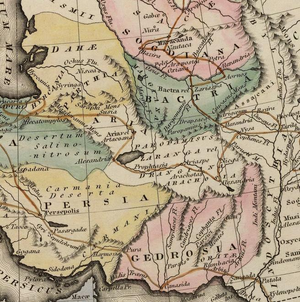
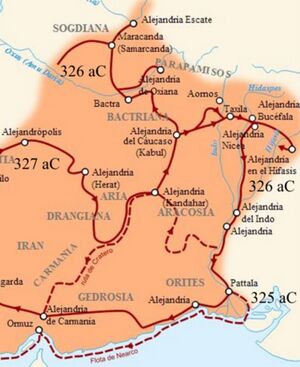
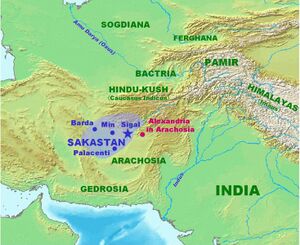
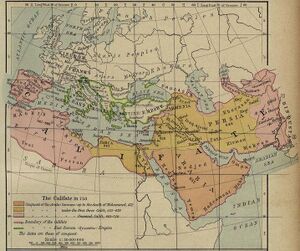
Balkh (Hindi:बल्ख, Persian/Pashto: بلخ Balkh) was an ancient city in what is now northern Afghanistan. It was also called Bactria.
Variants of name
- Balkh (Anabasis by Arrian, p. 187)
- Bactra (Anabasis by Arrian, p. 187, 192, 196, 199, 202, 206, 233, 246, 247, 312, 385.)
- Bactria (Anabasis by Arrian, p. 155, 183, 215, 236, 247, 263, 273, 284, 308, 319, 401.)
- Bactrians (Anabasis by Arrian, p. 155, 161, 165, 170, 183, 192, 198, 199, 206, 284, 235, 237, 238, 378, 387.)
- Bactria बेक्ट्रिया दे. Balkh (बल्ख), Bahlika (वाह्लिक), Bahli (बाह्ली) (AS, p.641)
- Balkh बल्ख (AS, p.613)
- Bactra (Greek)[1]
- Bactria
- Bactri (Pliny.vi.31, Pliny.vi.39)
- Tukharistan
- Balich (βαχλο ẞaxlə) (Bactrian)
- Zariaspa (Arrian:Anab.4.1)
- Zariaspe (Pliny.vi.18)
- Bagdhi (बग्धि) / Bakhtri (बख्त्रि): Sanskrit name Ketumala (केतुमाल) and Vahlika (वह्लीक), Old Persian Bakhtri (बख्त्रि) and Bactria (बैकट्रिया) in Greek.[2] It is same as Iranian Balkh and Indian Vahlika (वह्लीक). This is the region lying between the river Oxus and the Hindukush comprises Pauranic Ketumala (केतुमाल) Varsa. The town of Bacteria, for Iranians--the mother of cities, was situated on the southern side of the river Oxus.
Origin
According to James Tod[3] Balaram the elder brother of Sri Krishana, who left India after the Great War, may have founded Balich, or Balkh, emphatically called the ' mother of cities'.
Location
Today it is a small town in the province of Balkh, about 20 kilometers northwest of the provincial capital, Mazar-e Sharif, and some 74 km south of the Amu Darya. It was one of the major cities of Khorasan, since the latter's earliest history. Marco Polo described Balkh as a "noble and great city".[4]
History
The ancient city of Balkh was under the Greeks renamed Bactra, giving its name to Bactria. It was mostly known as the centre and capital of Bactria or Tokharistan. Balkh is now for the most part a mass of ruins, situated some 12 km from the right bank of the seasonally flowing Balkh River, at an elevation of about 365 m (1,200 ft).
Outside the town was a large Buddhist monastery later known as Naubahar.[5]
Balkh is considered to be the first city to which the Indo-Iranian tribes moved from the North of Amu Darya, between 2000 – 1500 BC.[6]
Since the Indo-Iranians built their first kingdom in Balkh[7] (Bactria, Daxia, Bukhdi) some scholars believe that it was from this area that different waves of Indo-Iranians spread to north-east Iran and Seistan region, where they, in part, became today's Persians, Tajik-Persians, Pashtuns, and Baluch people of the region.
Mention by Pliny
Pliny[8] mentions 'Media and the Caspian Gates'.... After leaving these gates (Caspian Gates) we find the nation of the Caspii, extending as far as the shores of the Caspian, a race which has given its name to these gates as well as to the sea: on the left there is a mountainous district. Turning back14 from this nation to the river Cyrus, the distance is said to be two hundred and twenty miles; but if we go from that river as far down as the Caspian Gates, the distance is seven hundreds15 miles. In the itineraries of Alexander the Great these gates were made the central or turning point in his expeditions; the distance from the Caspian Gates to the frontier of India being there set down as fifteen thousand six hundred and eighty16 stadia, to the city of Bactra,17 commonly called Zariaspa, three thousand seven hundred, and thence to the river Jaxartes18 five thousand stadia.
14 In a northern direction, along the western shores of the Caspian.
15 According to Hardouin, Eratosthenes, as quoted by Strabo, makes the distance 5060 stadia, or about 633 miles. He has, however, mistranslated the passage, which gives 5600 stadia, or 700 miles exactly, as stated by Pliny.
16 Or 1960 miles.
17 Bactra, Bactrum, or Bactrium, was one of the chief cities, if not the capital, of the province of Bactriana. It was one of the most ancient cities in the world, and the modern Balkh is generally supposed to occupy its site. Strabo, as well as Pliny, evidently considers that Bactra and Zareispa were the same place, while Appian distinguishes between the two, though he does not clearly state their relative positions.
18 The modern Syr-Daria, mentioned in c. 15. See p. 25.
Alexander the Great married Roxana of Bactria after killing the king of Balkh.[9] The city was the capital of the Greco-Bactrian Kingdom and was besieged for three years by the Seleucid Empire (208–206 BC). After demise of Greco Bactrian kingdom, it was ruled by Indo-Scythians, Parthians, Indo-Parthians, Kushan Empire, Indo-Sassanids, Kidarites, Hephthalite Empire and Sassanids before arrival of Arabs.
Mention by Pliny
Pliny[10] mentions 'Nations situated around the Hyrcanian Sea'....the Derbices also,18 through the middle of whose territory the river Oxus19 runs, after rising in Lake Oxus,20 the Syrmatæ, the Oxydracæ, the Heniochi, the Bateni, the Saraparæ, and the Bactri, whose chief city is Zariaspe, which afterwards received the name of Bactra, from the river21 there. This last nation lies at the back of Mount Paropanisus,22 over against the sources of the river Indus, and is bounded by the river Ochus.23
18 This was a tribe, apparently of Scythian origin, settled in Margiana, on the left bank of the Oxus. Strabo says that they worshipped the earth, and forbore to sacrifice or slay any female; but that they put to death their fellow-creatures as soon as they had passed their seventieth year, it being the privilege of the next of kin to eat the flesh of the deceased person. The aged women, however, they used to strangle, and then consign them to the earth.
19 The modern Jihoun or Amou. It now flows into the Sea of Aral, but the ancients universally speak of it as running into the Caspian; and there are still existing distinct traces of a channel extending in a southwesterly direction from the sea of Aral to the Caspian, by which at least a portion, and probably the whole of the waters of the Oxus found their way. into the Caspian; and not improbably the Sea of Aral itself was connected with the Caspian by this channel.
20 Most probably under this name he means the Sea of Aral.
21 The Bactrus. This river is supposed to be represented by the modern Dakash. Hardouin says that Ptolemy, B. vi. c. 11, calls this river the Zariaspis, or Zariaspes. See the Note at the end of c, 17, p. 30.
22 Now known as the Hindoo-Koosh; a part of the great mountain-chain which runs from west to east through the centre of the southern portion of the highlands of Central Asia, and so divides the part of the continent which slopes down to the Indian Ocean from the great central table-land of Tartary and Thibet. The native term, Hindoo-Koosh, is only a form of the ancient name "Indicus Caucasus," which was sometimes given to this chain. The ancient name was derived probably from the Persian word paru,a "mountain."
23 Flowing from the north side of the Paropanisus. According to Pliny and Ptolemy, this river flowed through Bactria into the Oxus; but according to Strabo, through Iyrcania into the Caspian Sea. Some suppose it to have been only another name for the Oxus. Ansart suggests that it may have been the river now known as the Bash.
Mention by Pliny
Pliny[11] mentions The Ariani and the adjoining Nations. ....The city of Cartana6 lies at the foot of Caucasus; in later times it has been called Tetragonis.7 This region lies over against that of the Bactri, who come next, and whose chief city is Alexandria8, so ,from the name of its founder. We then come to the Syndraci9 the Dangalæ10 the Parapinæ11, the Catuces, and the Mazi; and then at the foot of Caucasus, to the Cadrusi, whose town12 was built by Alexander.
7 Or the "four-cornered city."
8 This place has not been identified. It has been suggested that it is the same as the modern city of Candahar; but that was really Alexandria of the Paropanisadæ, quite a different place.
9 Inhabiting the district now called Arassen, according to Parisot.
10 Inhabiting the modern Danra, according to Parisot.
11 Inhabitants of the modern Parasan, according to Parisot.
12 The modern Candahar is generally supposed to occupy its site.
Mention by Pliny
Pliny[12] mentions Tigris....Near the spot where the fleet of Alexander came up37 the Pasitigris to Susa, there is a village situate on the Chaldæan Lake, Aple by name, from which to Susa is a distance of sixty miles and a half. Adjoining to the people of Susiane, on the east, are the Cossiei38; and above them, to the north, is Mesabatene, lying at the foot of Mount Cambalidus,39 a branch of the Caucasian chain: from this point the country of the Bactri is most accessible.
37 As mentioned in c. 26 of the present Book,
38 A warlike tribe on the borders of Susiana and the Greater Media. In character they are thought to have resembled the Bakhtiara tribes, who now roam over the mountains which they formerly inhabited. It has been suggested that their name may possibly be connected with the modern Khuzistan.
39 Supposed to be the same as the modern Kirmánshah mountains.
Visit by Xuanzang in 630 AD
Description by James Tod
According to James Todd[13] Kuru had two sons, Sudhanush and Parikshita. The descendants of the former terminated with Jarasandha, whose capital was Rajagriha on the Ganges, in the province of Bihar. From Parikshita descended the monarchs Santanu and Balaka : the first producing the rivals of the Great War, Yudhishthira and Duryodhana ; the other the Balakaputras.
The sons of Balaka founded two kingdoms : Palibothra, on the lower Ganges ; and Aror, on the eastern bank of the Indus, founded by Sahl.
James Todd[14] writes that Aror, or Alor, was the capital of Sind in remote antiquity : a bridge over the stream which branched from the Indus, near Dara, is almost the sole vestige of this capital of the Sogdoi of Alexander. On its site the shepherds of the desert have established an extensive hamlet ; it is placed on a ridge of siliceous rock, seven miles east of the insular Bakhar, and free from the inundations of the Indus. The Sodha tribe, a powerful branch of the Pramara race, has ruled in these countries from remote antiquity, and to a very late period they were lords of Umarkot and Umrasurara, in which divisions was Aror. Sahl and his capital were known to Abu-l Fazl, though he was ignorant of its position, which he transferred to Debal, or Dewal, the modern Tatta. This indefatigable historian thus describes it : "In ancient times there lived a raja named Siharas (Sahl), whose capital was Alor, and his dominions extended north to Kashmir and south to the ocean " [Ain, ii. 343]. Sahl, or Sahr, became a titular appellation of the country, its princes, and its inhabitants, the Sehraes. [See p. 21 above.] Alor appears to have been the capital of the kingdom of Sigerdis, conquered by Menander of Bactria. Ibn Haukal, the Arabian geographer, mentions it ; but a superfluous point in writing has changed Aror into Azor, or Azour, as translated by Sir W. Ouseley. The illustrious D'AnviUe mentions it ; but, in ignorance of its position, quoting Abulfeda, says, in grandeur " Azour est presque comparable a Mooltan." I have to claim the discovery of several ancient capital cities in the north of India : Surpur, on the Jumna, the capital of the Yadus ; Alor, on the Indus, the capital of the Sodhas ; Mandodri, capital of the Pariharas ; Chandravati, at the foot of the Aravalli mountains ; and Valabhipura, in Gujarat, capital of the Balaka-raes, the Balharas of Arab travellers. The Bala Rajput of Saurashtra may have given the name to Valabhipura, as descendants of Balaka, from Sahl of Aror. The blessing of the bard to them is yet, Tatta Multan ka Rao ( ' lord of Tatta and Multan,' the seats of the Balaka-putras) : nor is it improbable that a branch of these under the Indian Hercules, Balaram, who left India after the Great War, may have founded Balich, or Balkh, emphatically called the ' mother of cities.' The Jaisalmer annals assert that the Yadu and Balaka branches of the Indu race ruled Khorasan after the Great War, the Indo-Scythic races of Grecian authors. Besides the Balakas, and the numerous branches of the Indo-Medes, many of the sons of Kuru dispersed over these regions : amongst whom we may place Uttara Kuru (Northern Kurus) of the Puranas, the Ottorokorrhai of the Greek authors. Both the Indu and Surya races were eternally sending their superfluous population to those distant regions, when probably the same primeval religion governed the races east and west of the Indus.
The ruins of the town lie between Bhakkar and Khairpur, and are known by the name of Alor. Lieut. Maclagan says that it is also called Aror and that the band spoken of by Burnes is really an arched bridge. [There can be little doubt of the first syllable being the Arabic al, and the real name Rúr, as it survives in the modern town of Rorí, which stands close by the ruins of Alor.
Balhara Kingdom
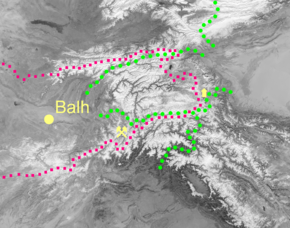
Kingdom of Balhara was a state situated in the upper course of Oxus River (present Amu Darya), and the foothills and valleys of Hindu Kush and Pamir Mountains (ancient Mount Imeon). Established ca. seventh century BC.
The inhabitants of Balhara were called Bulh in the fifth-seventh century AD Armenian geographical atlas ‘Ashharatsuyts’. The atlas describes them as an old settled, artisan and trading nation rather than nomadic tribe inhabiting the area centered around the ancient major city of Balkh that comprised roughly present northern Afghanistan and most of Tajikistan. According to Bulgarian historian Georgi Bakalov, Bulhi was probably the Armenian name of the ancient Bulgars. Historiographers in late Antiquity and the Early Middle Ages such as Agathias of Myrina, Theophylact Simocatta, and Michael the Syrian also identify Mount Imeon as an early homeland of the ancient Bulgars.
The Bulhi contributed to the ethnogenesis of the present Tajiks in both Afghanistan and Tajikistan, and possibly the homonymous ethnic group of Balhara in India. Some of them migrated to Europe already BC.
बल्ख
विजयेन्द्र कुमार माथुर[15] ने लेख किया है ..... बल्ख़ (AS, p.613) अफ़ग़ानिस्तान का एक प्रांत है। इसे ऐतिहासिक रूप से बैक्ट्रा भी कहा जाता है। यहाँ तोपे-रुस्तम नामक खंडहरों से इस स्थान पर एक अति प्राचीन और विशाल नगर के अस्तित्व का आभास मिलता है। अवशेषों से विदित होता है कि यह नगर विभिन्न देवों के उपासकों तथा अग्नि-पूजकों द्वारा बसाया गया होगा। यहाँ ऐतिहासिक गुफ़ाऐं तथा इनके भीतर अंकित भिति-चित्रों से भी बल्ख़ की प्राचीन सभ्यता का दिग्दर्शन होता है। (दे. वाह्लीक)
बाह्लिक = वाह्लिक
विजयेन्द्र कुमार माथुर[16] ने लेख किया है .....बाह्लिक = वाह्लिक (AS, p.626): 'केराता: दरदा दार्वाः शूरा वैयमकास तथा, औदुम्बरा दुर्विभागाः पारदा बाह्लिकैः सह. महा.सभा 52,13. बाह्लिक या वाह्लिक, बल्ख (=ग्रीक बेक्ट्रिया) का प्राचीन संस्कृत नाम है. यहां के निवासी युधिष्ठिर के राजसूय यज्ञ में भेंट लेकर आए थे. महरौली लौह स्तंभ के अभिलेख में चंद्र द्वारा सिंधु नदी के सप्तमुखों के पार वाह्लिकों के जीते जाने का उल्लेख है--'तीर्त्वा सप्त मुखानि येन समरे सिन्धोर्जिता-बाल्हिका:' जिससे गुप्त काल में वाह्लिकों की स्थिति सिंध नदी के मुहाने के पश्चिम में सिद्ध होती है. जान पड़ता है कि इस काल में बल्ख के निवासियों ने अपनी बस्तियां इस इलाके में बना ली थी. महाभारत कर्ण पर्व में संभवत: वाहीक नाम से ही वाह्लिक निवासियों का उल्लेख है. (देखें वाहीक, वाह्लिक, वाल्हिक, बाह्ली)
जाट इतिहास
कैप्टन दलीप सिंह अहलावत[17] ने लेख किया है...बल्ख - कर्दम प्रजापति के बड़े पुत्र जिनका नाम ‘इल’ था, की पहली राजधानी ‘बल्ख’ थी जो कि अपभ्रंश है वाह्लीक का। ‘इल’ धर्मात्मा सम्राट् का शासन वाह्लीक देश पर था (वा० रा० उ० का० सर्ग 90)। यह वही बल्ख है जहां पर व्यास ऋषि ने गश्ताश्य शाह के अभिवादन पर उसके मन्त्री ज़र्दश्न अर्थात् ज़ौरेस्टर की वेदान्त में परीक्षा ली थी। (देखो दी फौंटेन हैड आफ़ रिलीजन बाई बाबू गंगाप्रसाद)।
नोट - वाह्लीक (बल्ख) देश - वरिक वाहिक-वाह्लीक गोत्र के जाटों के नाम पर इस देश का नाम वाह्लीक पड़ा।
जाटों का विदेशों में जाना
ठाकुर देशराज[18] ने लिखा है .... उत्तरोत्तर संख्या वृद्धि के साथ ही वंश (कुल) वृद्धि भी होती गई और प्राचीन जातियां मे से एक-एक के सैंकड़ों वंश हो गए। साम्राज्य की लपेट से बचने के लिए कृष्ण ने इनके सामने भी यही प्रस्ताव रखा कि कुल राज्यों की बजाए ज्ञाति राज्य कायम का डालो। ....द्वारिका के जाट-राष्ट्र पर हम दो विपत्तियों का आक्रमण एक साथ देख कर प्रभास क्षेत्र में यादवों का आपसी महायुद्ध और द्वारिका का जल में डूब जाना। अतः स्वभावतः शेष बचे जाटों को दूसरी जगह तलाश करने के लिए बढ़ना पड़ा। .... बाल्हीकों ने अफगानिस्तान में बलख नाम से पुकारे जाने वाले नगर को अपनी राजधानी बनाया था। एक समूह ईरान में भी इनका बढ़ गया था जो आजकल आजकल बलिक कबीले के नाम से मशहूर है। याद रहे कबीला जत्थे और वंश को कहते हैं। यह बलिक आजकल मुसलमान हैं और सिदव प्रांत में रहते हैं। अच्छे घुड़सवार समझे जाते हैं। काश्यप गोत्री जाटों का एक जत्था इन्हीं बलिकों के पड़ोस में रहता है जो आजकल कास्पी कहलाता है। ईरान के सोलहुज जिले में कारापाया एक कबिला है। यह कारपश्व लोगों में से हैं। ये कारपश्व जाट मथुरा जिले से उठकर गए थे जहांकि उनकी राजधानी आजकल के कारब में रही थी। अफगानिस्तान में हमें महावन नामक परगना भी मिलता है। इसका नामकरण मालूम होता है इन्हीं कारपश्व लोगों ने किया होगा। फिर बिचारे वहां से भी सोलहुज जिला (ईरान) में चले गए होंगे। कारपाया लोग बड़े अच्छे घुड़सवार गिने जाते हैं। कहा जाता है कि आरंभ में यह इस जिले में केवल 800 कुटुंब लेकर आबाद हुए थे। आजकल भी यह इस सोलहुज जिले के अधिकारी हैं और मुसलमान धर्म का पालन करते हैं।
External links
References
- ↑ Arrian: The Anabasis of Alexander/3b, Ch.23
- ↑ परोपकारी, अप्रेल प्रथम 2019, s.n. 4, p.6
- ↑ James Todd Annals/Chapter 4 Foundations of States and Cities by the different tribes, p.51,f.n.-3
- ↑ City of Balkh (antique Bactria)
- ↑ Litvinovsky, Boris Abramovich. History of civilizations of Central Asia, Volume 3. UNESCO; published by Motilal Banarsidass. p. 149.
- ↑ Nancy Hatch Dupree, An Historical Guide to Afghanistan, 1977, Kabul, Afghanistan
- ↑ http://www.iranicaonline.org/articles/iran-vi1-earliest-evidence
- ↑ Natural History by Pliny Book VI/Chapter 17
- ↑ BBC News Magazine
- ↑ Natural History by Pliny Book VI/Chapter 18
- ↑ Natural History by Pliny Book VI/Chapter 25
- ↑ Natural History by Pliny Book VI/Chapter 31
- ↑ James Todd Annals/Chapter 4 Foundations of States and Cities by the different tribes, p.51
- ↑ James Todd Annals/Chapter 4 Foundations of States and Cities by the different tribes, p.51,f.n.-3
- ↑ Aitihasik Sthanavali by Vijayendra Kumar Mathur, p.613
- ↑ Aitihasik Sthanavali by Vijayendra Kumar Mathur, p.626
- ↑ Jat History Dalip Singh Ahlawat/Chapter IV (Page 337), S.No.15
- ↑ Thakur Deshraj: Jat Itihas (Utpatti Aur Gaurav Khand)/Navam Parichhed,pp.147-151
Back to Jat Places in Afghanistan

